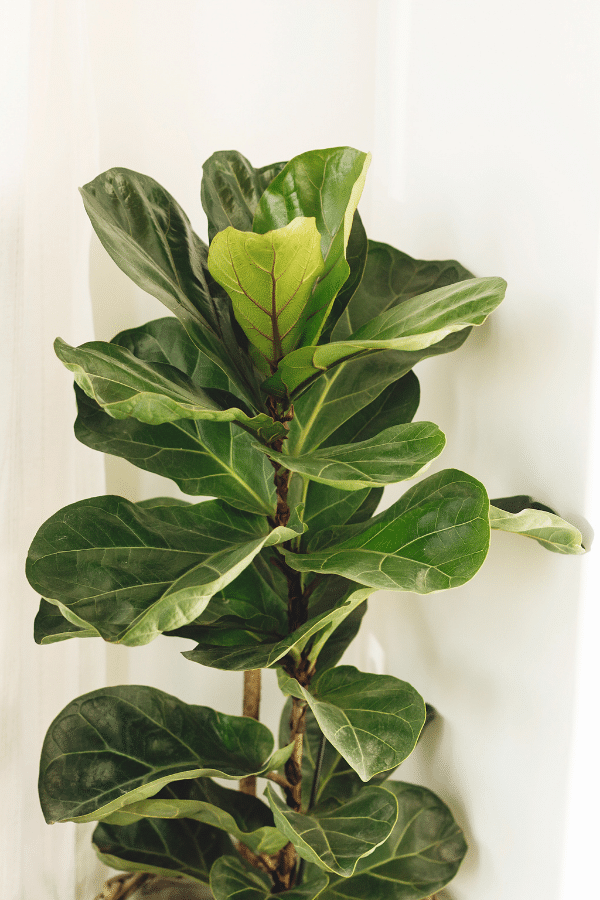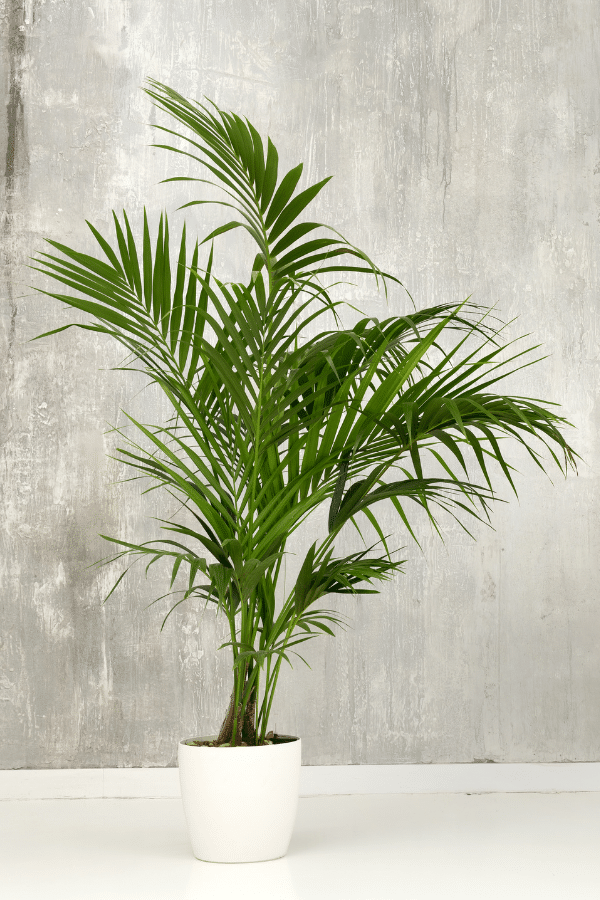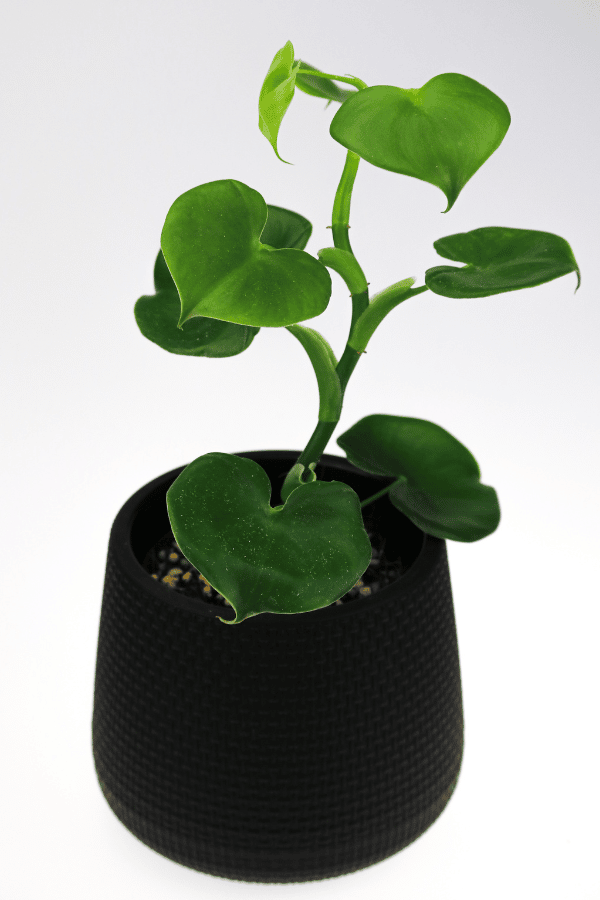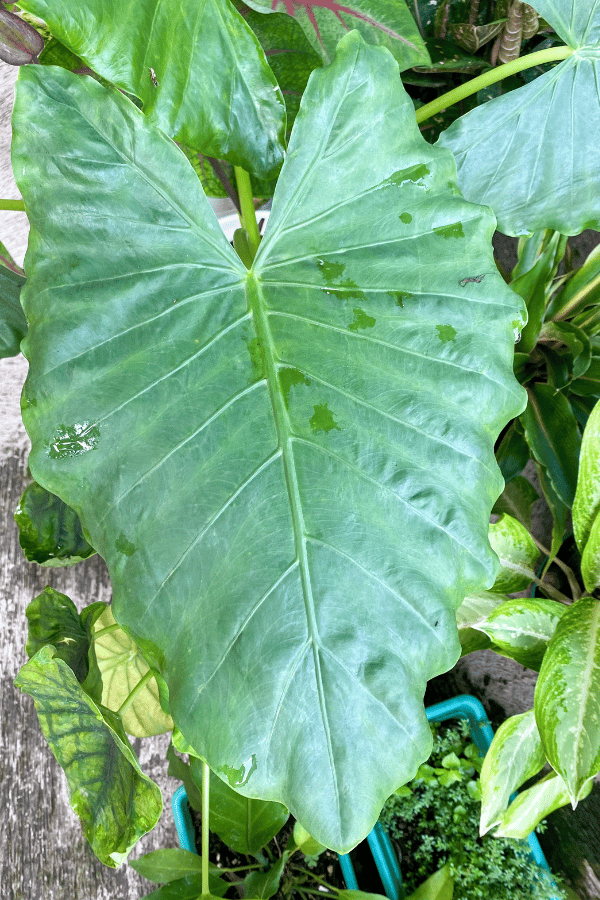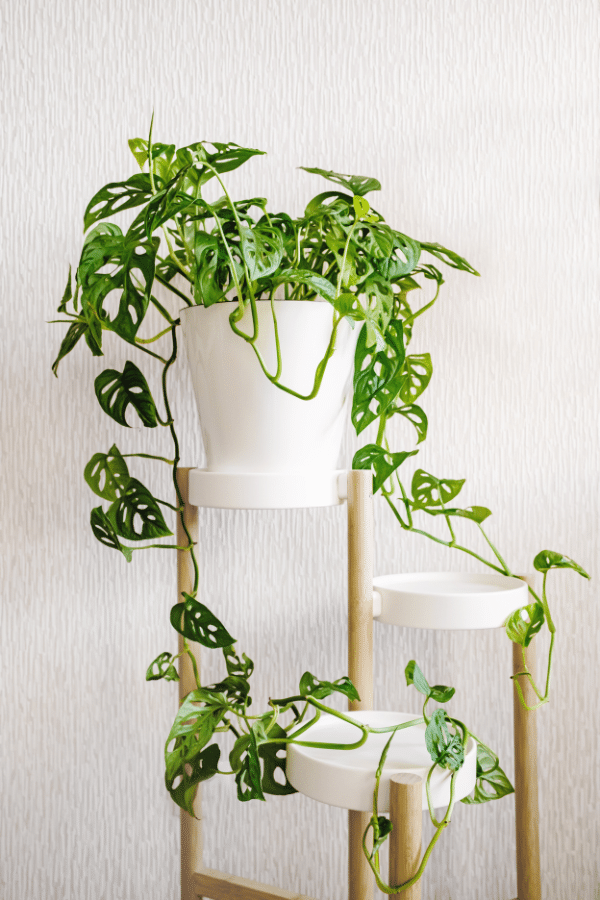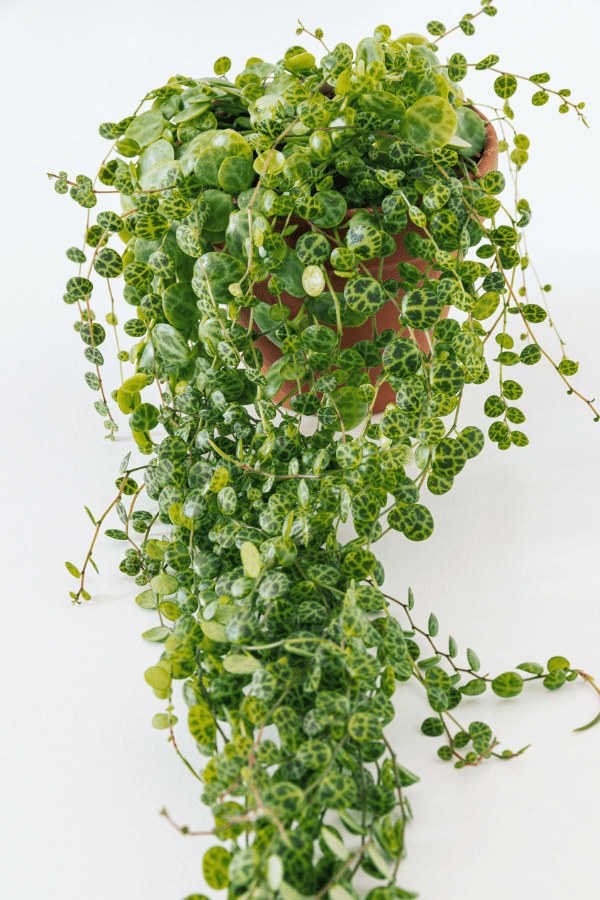Peperomia Hope
Scientific Name: Peperomia Tetraphylla
Peperomia Hope care is an easy Peperomia to grow and care for. If you want a smaller trailing houseplant that won’t get too big, a Peperomia Tetraphylla plant may be for you.
To give this Peperomia plant the best care, it requires well-draining, airy soil, allow the top inch of soil to dry out before watering, provide the plant with bright indirect sunlight, temperatures ranging from 65-80F, and added humidity levels.
Quick Care Overview
| Common Name | Peperomia Hope |
| Scientific Name | Peperomia Tetraphylla |
| Family | Piperaceae |
| Origin | South America |
| Growth Rate | Slow |
| Identification | Oval shaped, fleshy leaves with 3-4 leaves on each stem |
| Height | Up to 18 inches in length |
| Soil | Well-draining, airy soil mix |
| Water | Water when top inch of soil is dry |
| Temperature | 65-80F |
| Sunlight | Bright indirect sunlight |
| Toxic to Cats & Dogs | No |
| Toxic to Humans | No |
| Pests | Mealybugs, aphids, scale, fungus gnats |
| Diseases | Root rot |
Below we will dive deep into this Peperomia Hope care guide.
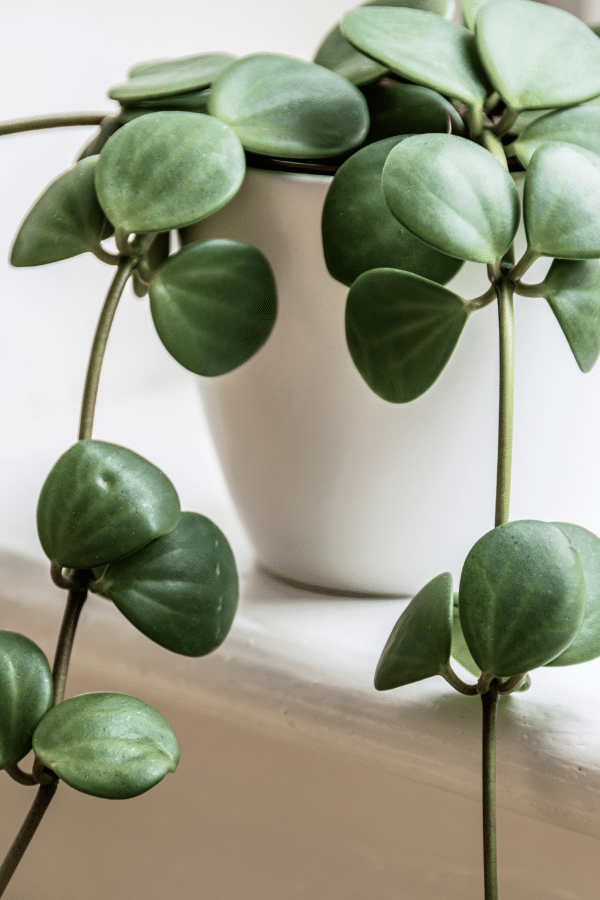
Peperomia Hope History
Peperomia Hope, also known as Peperomia Tetraphylla, four-leaved peperomia, or acorn peperomia is an excellent choice for beginning houseplant collectors. Coming from the Piperaceae family, this lovely, low-maintenance trailing epiphyte is perfect for those looking for a plant that can thrive on a bit of neglect.
Peperomia Hope Identification
Peperomia Hope is a trailing epiphyte that has oval-shaped leaves on long trailing stems. Foliage grows in groups of 3-4 on stems and may range from light to dark green in color. Fleshy leaves conserve water similar to a succulent, though by classification, Peperomia Hope is not.
Peperomia Hope Growth Facts
Peperomia Hope is a slow-growing tropical plant that is very low-maintenance.
How Big Does a Peperomia Hope Get?
Stems may trail up to 18 inches long.
Peperomia Hope Care
This Peperomia doesn’t require much care in terms of frequent watering, humidity, or pruning and maintenance making it the perfect plant for those who do not consider themselves to have a green thumb.
Peperomia Hope Soil
Peperomia Hope enjoys being grown in a well-draining, airy growing medium. A great growing medium for your Peperomia is a 1:1:1 mixture of commercial potting mix, perlite, and orchid bark. You may also incorporate compost or coco coir or peat moss additives to increase acidity and soil richness.
Peperomia Hope Fertilizer
Peperomia Hope will enjoy being fed monthly with a diluted balanced liquid organic fertilizer indicated for houseplants to boost growth to receive optimal nutrients. Follow all label instructions and dilute by about half. Do not fertilize in fall or winter or overfertilize, as this can cause severe damage.
Peperomia Hope Watering
Peperomia Hope plant likes to remain consistently moist but not oversaturated with water. Allow the top 1-2 inches of soil to become completely dry before rewatering. Note that any excess water should be drained from the drainage tray. Watering frequency should be reduced in the colder fall and winter months.
Peperomia Hope Light Requirements
Although Peperomia Hope can tolerate low light conditions, this will lead to faded colors and stunted growth. Therefore, this plant will do best when grown in bright indirect light. However, you should avoid exposing your Peperomia to too much direct sunlight, leading to sun scorching.
Peperomia Hope Temperature & Humidity
As a tropical plant, Peperomia Hope likes to remain in warm and humid temperatures. Therefore, keeping this plant between 65 to 80 degrees Fahrenheit is ideal. Supplementing this plant with added humidity from a pebble tray or humidifier will help promote vigorous growth.
Repotting Peperomia Hope
Peperomia Hope should be repotted every 1-2 years or whenever roots are seen sticking out from drainage holes. Select a 1-2 inches larger container than the previous one, repot your plant, refresh the soil, lightly tamp, water thoroughly, and place in indirect light. Be very careful when repotting, as this Peperomia has particular delicate roots prone to snapping. This Peperomia’s trailing habit would make a hanging basket the perfect spot for it.
Peperomia Hope Maintenance & Pruning
While not necessary, periodic pruning of Peperomia Hope can help maintain its shape. Ideally, pruning should be done in spring or summer during active growth. Cut stems may even be used to propagate your plant.
Peperomia Hope Propagation
Peperomia Hope may be propagated easily by stem cuttings or leaf cuttings. To propagate your Peperomia, cut stem cutting(s) with a couple of nodes and place the cuttings in water. Do not submerge any leaves. Place your cuttings in indirect light. Change the water of your cuttings if they become murky. Within a few weeks, your cuttings should develop. Next, transfer your cuttings to a container with soil after the roots have become a few inches long. After potting, keep your cuttings moist until well established.
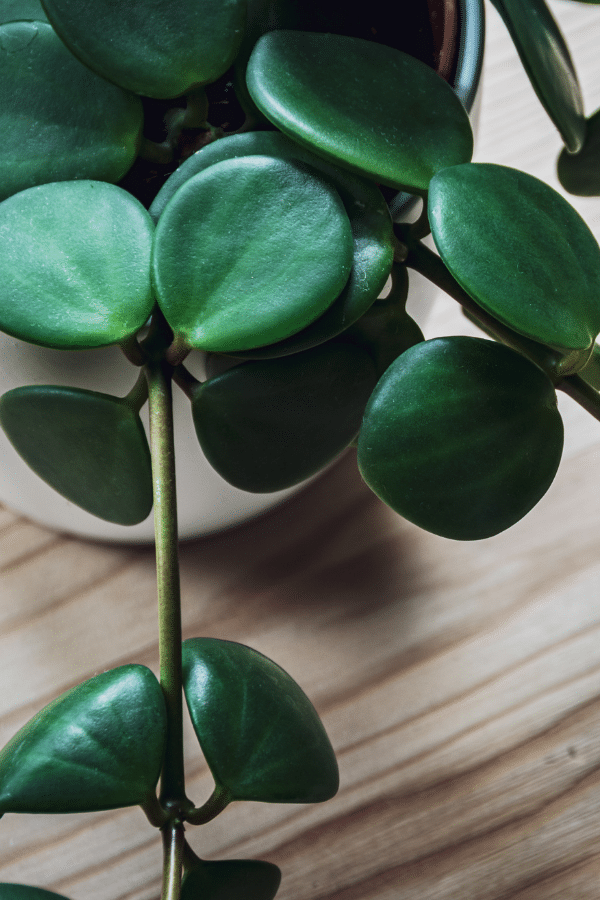
Peperomia Hope Toxicity
Like many types of Peperomia plants, Peperomia Hope is not toxic to humans, cats, and dogs.
Toxicity to Humans
Luckily, all Peperomias are considered non-toxic to humans and are suitable for spaces with babies and small children. However, you still should not ingest this plant.
Toxicity to Cats & Dogs
Peperomia Hope is not toxic to pets and is safe to have around dogs and cats. However, for your plant’s health, you should avoid allowing your pet to nibble on your Peperomia.
Peperomia Hope Problems
Peperomia Hope Leaves Turning Yellow
When the foliage of your Peperomia turns yellow, it is likely indicative that your plant is not receiving sufficient light or that it is being overwatered. Ensure that you do not overwater your Peperomia and that it is not allowed to sit within standing water within the plant container’s drainage tray.
Peperomia Hope Leaves Turning Brown
There may be several factors that lead to the browning of the foliage of your Peperomia. Browning may occur due to overwatering, overfertilization, or lack of humidity. Ensure that you do not overwater your Peperomia.
Peperomia Hope Diseases
While Peperomia Hope isn’t known to be prone to plant disease, it still may be affected by issues related to overwatering, such as root rot. Therefore, ensure that you do not overwater your plant and that your Peperomia is planted in well-draining soil in a container with ample drainage.
Peperomia Hope Pests
Peperomia Hope, having fleshy leaves, can be quite the magnet for sap-sucking bugs. The common pests that will affect this plant are mealybugs, scale, and aphids. Additionally, fungus gnats can become a nuisance for this plant. Isolate your plant and treat it with a pesticide such as neem oil or insecticidal soap upon identifying an infestation.

